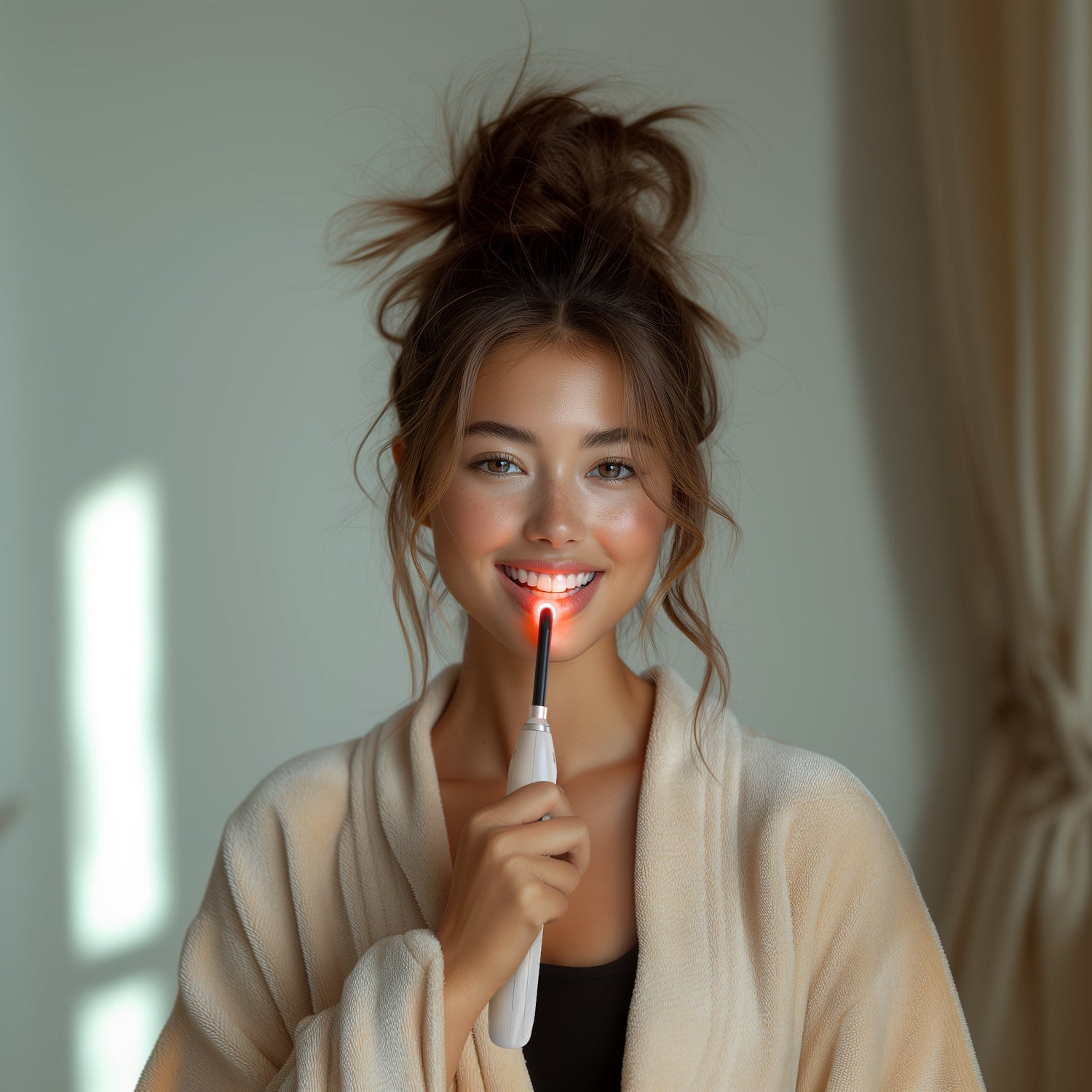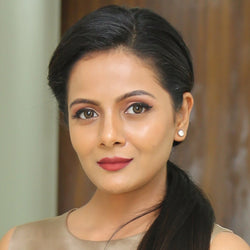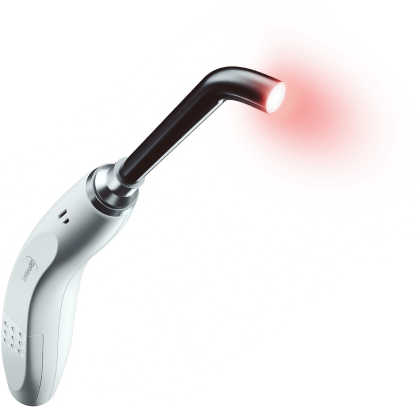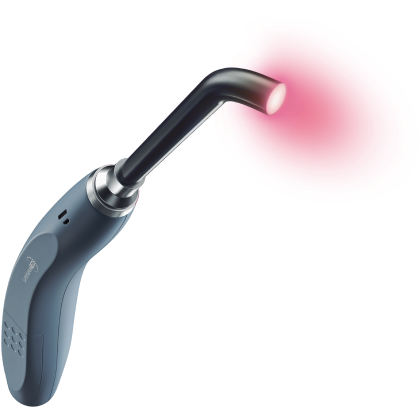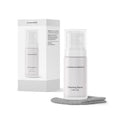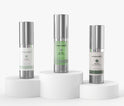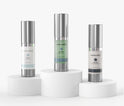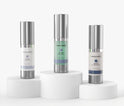How To Treat Canker Sores on Your Tongue

When you talk, your tongue revolves through more than 20 different movements, helping you speak at least 90 words per minute. With all that movement, it’s no wonder the tiniest little lesion on your tongue can feel like a giant, throbbing sore!
Canker sores on the tongue are less common than those on other soft tissue inside your mouth; however, they do happen. While canker sores in general will heal on their own, be sure that the lesion on your tongue really is a canker sore and not a larger issue before shrugging it off.
Once you know you have a canker sore on your tongue, you can find both a treatment method that works for you and ways to prevent future sores!
What Are Canker Sores?
Canker sores on your tongue or anywhere else in your mouth are also known as aphthous ulcers. These are shallow white lesions with inflamed pink borders that occur on the inner cheeks, the roof of the mouth, the inside of the lips, and the tongue. They’re not dangerous, but they do cause pain — sometimes a great deal of pain, especially canker sores on the tongue.
Cankers are typically between 1–4 mm in size, but aggressive sores can be larger than 5 mm.
Though often confused with cold sores, canker sores are not contagious or caused by the herpes virus. They occur sporadically and usually heal on their own between outbreaks. Most canker sores last for about a week to 10 days, but severe canker sore outbreaks may take up to three weeks to heal.
The most common triggers for canker sores on the tongue and elsewhere include:
- NSAIDs (Motrin®, Aleve®)
- Vitamin deficiencies (low vitamin B12 or iron)
- Foods high in citric acids, such as oranges, tomatoes, and some cheeses
- Underlying autoimmune conditions (HIV/AIDs, lupus, Behçet’s disease)
- Chronic high stress or a traumatic life event
- A family history of canker sore outbreaks
Canker sores emerge in different shapes, sizes, and severities, but they’re always inside the mouth. If you have a sore on the outside of your mouth or lips, you’re likely dealing with a cold sore, not a canker sore.
Is It Common to Get a Canker Sore on Your Tongue?
Canker sores on the tongue are not as common as those on other places inside the mouth, but they do happen. Besides those on top of the tongue, you can also develop cankers sores on the side of the tongue and under the tongue.
To identify a canker sore on the tongue, look for these symptoms:
- A visible, round sore causing pain
- Sore’s interior is white or gray in color
- Sore has a red or pink border
- Sore may be slightly swollen
A canker sore on the side of the tongue or under the tongue will have the same basic appearance as a canker sore on the top of the tongue.
Possible Misdiagnoses for Canker Sores
If your symptoms don’t quite align with the defining characteristics of a canker sore on your tongue, you could have a different condition altogether.
Leukoplakia
Leukoplakia is a condition that causes white patches and sometimes sores in the mouth. Most white patches develop on the insides of the cheeks, on the gums, underneath the tongue, or on the tongue. Unlike a canker sore on the tongue, leukoplakia usually doesn’t cause any pain.
This condition is more serious than a canker sore because it can be a precursor to oral cancer. Research indicates that up to 17.5% of people with leukoplakia will develop squamous cell carcinoma, a type of skin cancer, within 15 years. Common causes of leukoplakia include smoking, tobacco use, and heavy drinking, but the condition can appear without these factors in some cases.
If you think you might have leukoplakia, it’s important to talk with your dentist.
Oral Thrush
Oral thrush, also known as oral candidiasis, develops when a Candida fungus accumulates on the tissue lining the mouth. Candida itself isn’t dangerous, but an excess of this fungus does cause unpleasant side effects that are very different from canker sore symptoms.
You can recognize oral thrush by the following symptoms:
- Creamy white lesions on the tongue, inner cheeks, roof of the mouth, and gums
- Slightly raised lesions that look like cottage cheese
- Cottony feeling in the mouth
- Loss of taste
Thrush is most common in infants, the elderly, and people with weakened immune systems, diabetes, or lung conditions requiring the use of inhaled steroids.
Oral Lichen Planus
Oral lichen planus is a chronic inflammatory condition that causes white, lacy patches to develop inside the mouth. Red, swollen, open sores may also appear, which could be mistaken for canker sores. These sores cause pain and discomfort.
Signs of oral lichen planus appear throughout the entire mouth, including inside the cheeks and on the gums, tongue, palate, and inner tissues of the lips. Your doctor can determine whether you have this condition and how to keep it under control.
Finding the Cause of Canker Sores
It can be difficult to pinpoint the cause of canker sores on the tongue. In many cases, people don’t investigate further to determine an underlying cause. If you suffer from frequent cankers, though, it’s worth doing a little extra digging to see if you’re at risk for any of these ailments:
- Celiac disease
- Inflammatory bowel syndrome (IBS)
- Ulcerative colitis
- Crohn’s disease
- Behçet’s disease
- HIV/AIDS
- Food allergies or sensitivities
- Vitamin or nutritional deficiencies
- Hormonal issues
- Chronic stress
If you suspect you could be dealing with something more serious than just a canker sore, schedule an appointment with your doctor to discuss the possibility of these and other underlying conditions.

How to Treat a Canker Sore on the Tongue
If you determine that your tongue problem is, in fact, a canker sore, fear not! You can take decisive steps to reduce your pain and avoid aggravating the sore further.
Care for Your Mouth
Certain factors can exacerbate canker sore pain. Use these guidelines to take extra care of your mouth and reduce your risk of pain while you have an active canker sore on your tongue:
- Chew your food carefully to avoid biting your tongue, especially for a canker sore on the side of the tongue.
- Avoid spicy, salty, and acidic foods that can irritate the soft tissues inside your mouth.
- Frequently rinse your mouth with a solution of warm water and salt (one teaspoon of salt per half cup of warm water).
- Use extra care in your oral hygiene routine to avoid trauma to the canker sore and to keep bacteria under control.
- Avoid toothpastes and other oral care products that contain sodium lauryl sulfate, which can irritate canker sores on your tongue and in other areas.
- See a dentist if you get canker sores on your tongue regularly or if your sores seem unusually large or painful.
Use OTC Treatments
You can also try over-the-counter treatments to reduce your canker sore pain.
Silver Nitrate
Silver nitrate is a natural chemical compound that’s been used for its antimicrobial properties since the thirteenth century.
As soon as silver nitrate is activated by contact with moisture, it delivers silver ions to wounded tissue. This reaction binds the tissue and obstructs blood vessels, which cauterizes active wounds and reduces the pain they cause.
It’s not the most pleasant experience, but it’s undeniably effective. Silver nitrate is a popular remedy for skin tags, nosebleeds, skin ulcers, and other skin conditions. Overall, research shows that treating canker sores with silver nitrate is a simple and affordable way to decrease pain, though the healing time remains about the same.
Topical Anesthetics
Over-the-counter topical anesthetics like benzocaine (Kank-A) and Orajel provide safe, temporary numbing of painful sores. You can apply local anesthetics several times a day according to the product directions to relieve discomfort until your canker sore heals completely.
Coconut Oil
Unrefined coconut oil possesses certain properties that have the potential to alleviate canker sore discomfort. These properties include:
- Healthy fatty acids
- Antimicrobial effects
- Antiviral activity
- Antifungal capabilities
- Anti-inflammatory action
- Mild analgesic to reduce pain and discomfort
In fact, the applications of coconut oil are so highly valued in certain countries that the coconut tree is often referred to as the “tree of life!”
Hydrogen Peroxide
Hydrogen peroxide is an easy way to reduce bacteria in the mouth and support canker sore healing.
Since this substance is very potent, be sure to dilute and apply safely to your cankers:
- Dilute 3% hydrogen peroxide with equal parts water.
- Dip a cotton ball or Q-tip into the mixture.
- Apply directly to your canker sore two to three times per day.
To cover a large area of the mouth, you can even use this diluted hydrogen peroxide mixture as a mouth rinse. Simply swish for a minute and spit it out. Avoid swallowing the solution, since it can cause stomach pain and vomiting.
Experiment With Other Home Remedies
Want to use something that’s already sitting in your pantry? Try some of these other simple at-home solutions to see if one works for you!

Canker Sore on the Side of the Tongue
If you don’t normally get cankers on your tongue, then the likely cause of a stray canker sore on the side of the tongue is your teeth. When you bite your tongue, the wound can turn into a canker sore, along with all the symptoms that come with it. Then, when your tongue is swollen, you’re more likely to bite it again while talking or chewing, making the problem worse.
After a painful bite, you can try to prevent the formation of a canker sore on the side of your tongue by using a few simple techniques:
- Immediately rinse your mouth with a warm saltwater solution.
- Put an ice cube on the side of your tongue where it was injured.
- Add an over-the-counter oral antiseptic gel to your tongue to numb the pain and prevent infection.
- Use care when talking or eating to avoid biting the swollen area again.
A canker sore on the side of your tongue could also be due to grinding your teeth while you sleep. If you believe this may be the case, schedule an appointment with your dentist and ask about a night guard. A well-fitting night-guard can protect your teeth, tongue, and jaw.
Canker Sore Under the Tongue
The only thing as irritating as a canker sore on the side of the tongue is a canker sore under the tongue!
A sore under your tongue can be tricky to deal with because it’s easy to forget it’s there. If you’re not talking or chewing or otherwise moving your mouth, the pain may subside. Then, when you need to move your tongue again for any reason, it all comes flooding back.
A canker sore under the tongue is more common than you might realize, so if you deal with this issue often, try to stay calm and use the same treatment methods listed above, especially the tips under Care for Your Mouth.

Consider Light Therapy
If you get canker sores on your tongue often, you may be looking for a more effective — and preventative — treatment method.
Consider light therapy. Studies show red light therapy quickly reduces canker sore pain and speeds up healing time. In fact, red light therapy study participants report a significant reduction in pain starting from their first treatment, and a healing time shortened by days!
Lifestyle changes and over-the-counter treatments are important and useful, but they can’t address canker sores quite the way treatment with light can. The Luminance RED Mouth Sore Treatment Device is an FDA-registered, handheld device designed to use high-powered, medically optimized light to help you manage canker sores on the tongue and elsewhere in the mouth.
If you regularly suffer from canker sores and want to prevent future outbreaks, try light treatment with the Luminance RED.


